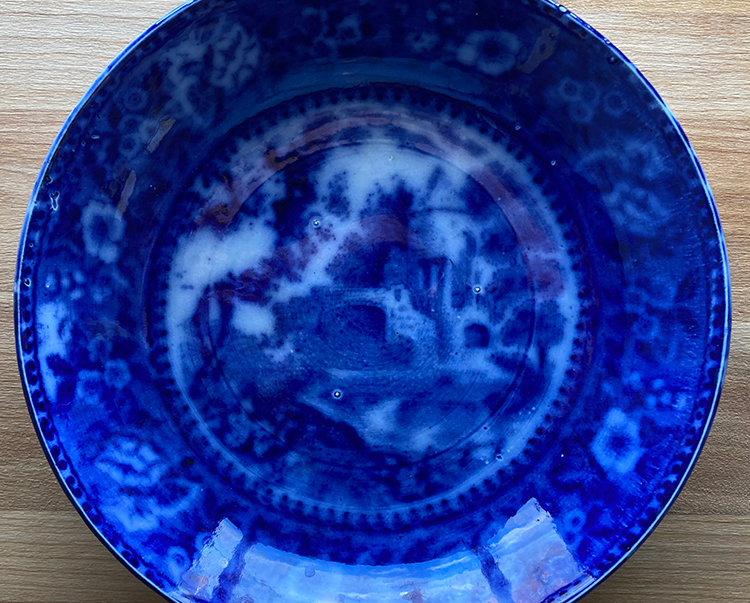Eggplant Adobo
Five basic ingredients—soy sauce, vinegar, garlic, bay leaves and peppercorns—turn Asian eggplants into a tangy, vegan Philippine adobo dish.
Servings 3 as a side
Ingredients
- grapeseed oil or other neutral oil
- 3 Japanese eggplants, about 1 pound total, stems trimmed and cut into 1-inch slices
- 5 large cloves garlic, chopped
- 1/3 cup rice vinegar or distilled white vinegar
- 1/3 cup reduced-sodium soy sauce
- 2 teaspoons sugar
- 2 teaspoons freshly ground black pepper
- 2 bay leaves
- salt, if needed
- steamed white rice, for serving
Instructions
- Heat 4 tablespoons oil in a large skillet or sauté pan over medium high flame. Working in batches, brown eggplant slices on both cut sides, about 3 minutes per side. Add extra oil as needed (eggplant sucks up oil—you will need it). Transfer browned slices to paper towel-lined plate.
- Reduce heat to medium. Add oil to pan if needed, then add garlic. Cook, stirring constantly, until aromatic, about 45 seconds.
- Add vinegar, soy sauce, sugar, black pepper and bay leaves to pan, stirring to combine. Return eggplant to pan. Reduce heat to simmer and cook until eggplant is tender, 3 to 5 minutes.
- Adjust seasoning with salt, if needed. Serve with white rice.
Kitchen Notes
Ah, the optional pork. By adding a little animal protein, you can turn this into a lunch main course for two. After browning the eggplant, add 1/4-pound of ground pork to the pan. Cook until just no longer pink, then add the garlic and continue the recipe as above.
Liz’s Crockery Corner. Most of our antique dishes were made by a particular manufacturer, usually in Staffordshire, but this one is a bit unusual. It was made in Staffordshire, but the mark it bears is that of Rowland & Marsellus, a company in New York that didn’t make anything itself, but instead, starting in the 1890s, commissioned various English potteries to manufacture dishes depicting particular scenes, and then sold them on to various American outlets.
 The majority of Rowland & Marsellus dishes were souvenir plates. Often they depicted romantic or famous spots—Plymouth Rock, Yale College, the Longfellow home in Maine; there are tons featuring scenes from American cities, with, say the city hall in the center and important local sites—bridges, colleges, cathedrals—arrayed in cartouches around the rim. (Those plates might have three or four different marks on the bottom—one for R&M, one for the actual manufacturer, one for the retail shop that sold the plate, and one naming the scene on the front.) Other R&M souvenir plates showed famous figures—Robert Burns, Clara Barton, Paul Revere (on his horse, bien sûr) and of course, Shakespeare. Yet others were so-called historical scenes, generic castle-tree-water scenes like this one, which I think was made by the British Anchor Pottery Company for Rowland &Marsellus some time in the early 20th century.
The majority of Rowland & Marsellus dishes were souvenir plates. Often they depicted romantic or famous spots—Plymouth Rock, Yale College, the Longfellow home in Maine; there are tons featuring scenes from American cities, with, say the city hall in the center and important local sites—bridges, colleges, cathedrals—arrayed in cartouches around the rim. (Those plates might have three or four different marks on the bottom—one for R&M, one for the actual manufacturer, one for the retail shop that sold the plate, and one naming the scene on the front.) Other R&M souvenir plates showed famous figures—Robert Burns, Clara Barton, Paul Revere (on his horse, bien sûr) and of course, Shakespeare. Yet others were so-called historical scenes, generic castle-tree-water scenes like this one, which I think was made by the British Anchor Pottery Company for Rowland &Marsellus some time in the early 20th century.
 The majority of Rowland & Marsellus dishes were souvenir plates. Often they depicted romantic or famous spots—Plymouth Rock, Yale College, the Longfellow home in Maine; there are tons featuring scenes from American cities, with, say the city hall in the center and important local sites—bridges, colleges, cathedrals—arrayed in cartouches around the rim. (Those plates might have three or four different marks on the bottom—one for R&M, one for the actual manufacturer, one for the retail shop that sold the plate, and one naming the scene on the front.) Other R&M souvenir plates showed famous figures—Robert Burns, Clara Barton, Paul Revere (on his horse, bien sûr) and of course, Shakespeare. Yet others were so-called historical scenes, generic castle-tree-water scenes like this one, which I think was made by the British Anchor Pottery Company for Rowland &Marsellus some time in the early 20th century.
The majority of Rowland & Marsellus dishes were souvenir plates. Often they depicted romantic or famous spots—Plymouth Rock, Yale College, the Longfellow home in Maine; there are tons featuring scenes from American cities, with, say the city hall in the center and important local sites—bridges, colleges, cathedrals—arrayed in cartouches around the rim. (Those plates might have three or four different marks on the bottom—one for R&M, one for the actual manufacturer, one for the retail shop that sold the plate, and one naming the scene on the front.) Other R&M souvenir plates showed famous figures—Robert Burns, Clara Barton, Paul Revere (on his horse, bien sûr) and of course, Shakespeare. Yet others were so-called historical scenes, generic castle-tree-water scenes like this one, which I think was made by the British Anchor Pottery Company for Rowland &Marsellus some time in the early 20th century.